
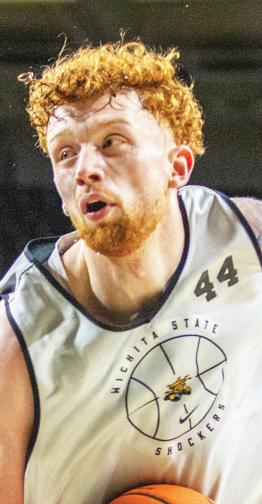





Shocker basketball kicks off the season with big changes and new players after chaotic off-season

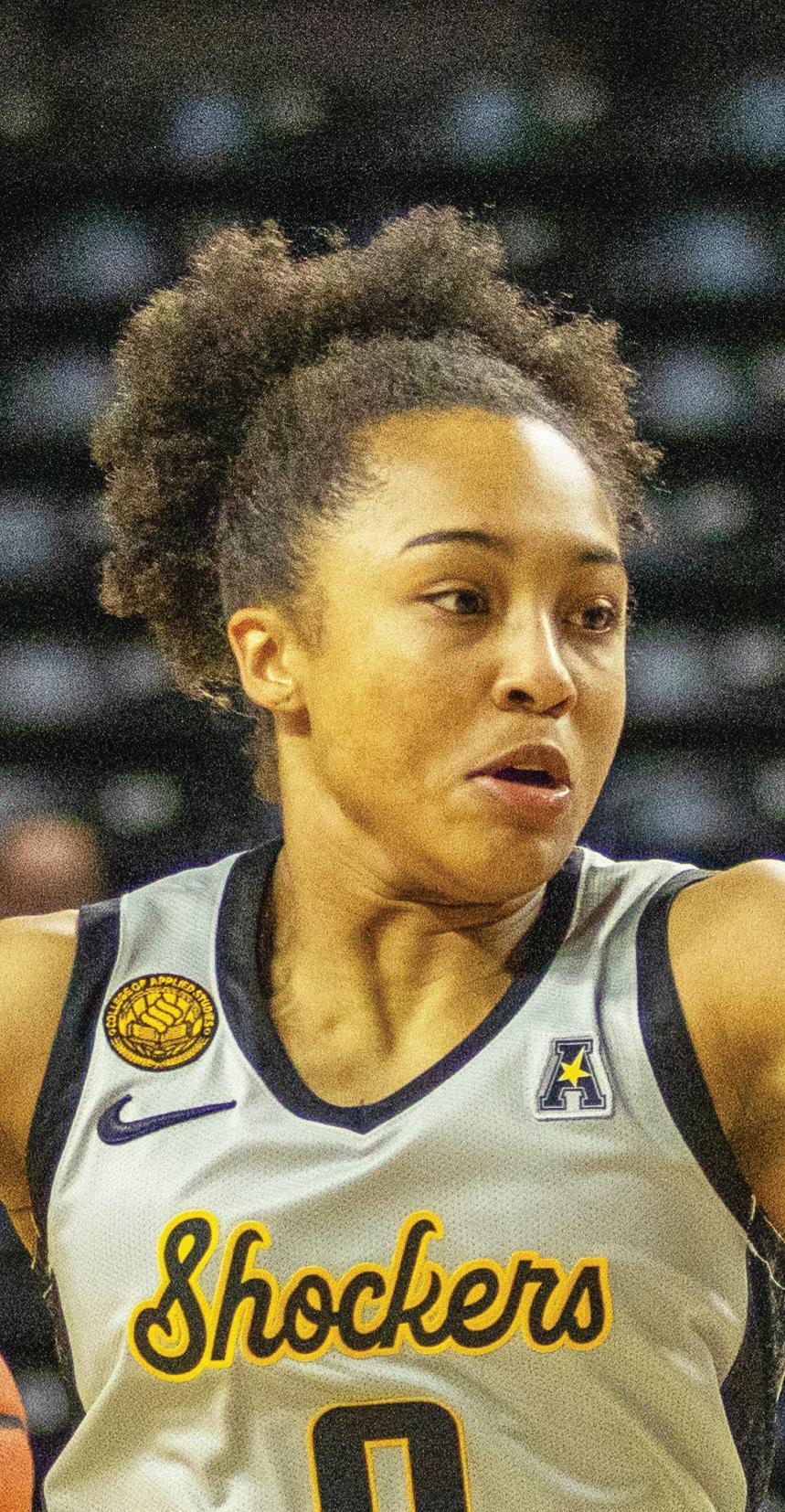
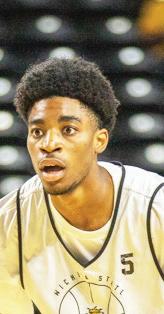
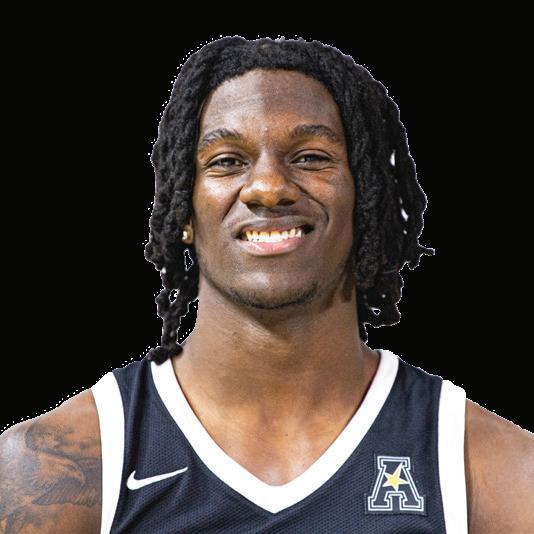
•
•
•
8.7 points per game







Forward | R-Jr. | 6’9” Played for Monmouth
• Played in 33 games 8.9 points per game Enjoys
| R-Fr. | 6’5”
not play last year due to injury
• 16.7 points per game
Enjoys playing with his dog and playing “Fortnite”


•




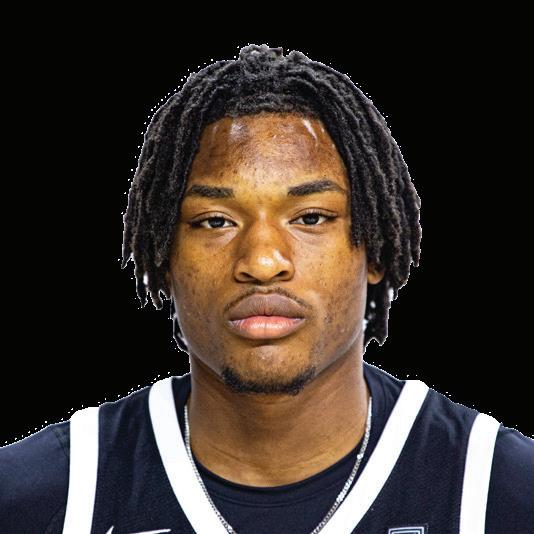
• Guard | So. | 6’5” Played for Fresno State Played in 29 games 7.7 points per game
• Enjoys listening to music































‘THERE’S
Men’s basketball tips off with depth, sharpshooting and new identity
BY OWEN PROTHRO sports@thesunflower.com
Depth wins basketball games in March — and last season, Wichita State was stretched at times.
A loss to Oklahoma State in the first round of the National Invitation Tournament exposed a key flaw for the Shockers during the 2024-25 season: limited bench production.
All five of Wichita State’s non-starters in that game finished negative in the offensive plus/ minus. Earlier in the year, head coach Paul Mills had to rely heavily on a seven-man rotation while Ronnie DeGray III, who graduated last year, was out from midNovember to mid-January with an injury after the third game of the season.
This year, Mills said, will be different. Even though the Shockers are returning just three players — which accumulates to 1.39% of last year’s minutes and 0.91% of scoring — he’s confident that the team has a core group he can send onto the court at any given time.
“If you look at the opening game last year against Western Kentucky, we played eight guys,” Mills said. “… I would tell you that we have nine, if not 10 legit guys every day who’s been able to be competitive and been able to add value through this whole process.”
Despite the unknowns with a team of 12 newcomers, Mills said the team has something to prove.
“I think everybody has the same goal,” Mills said. “And it’s to win a championship, so there’s a bigger vision here. But at the same time, you’re anxious to get started on the execution and what the pieces look like in a real, live, competitive environment.”
I’m a big believer that good people make good basketball players.
Mills pointed to key areas of improvement at Wichita State’s media day Thursday afternoon. Guard transfers like Kenyon Giles (UNC Greensboro), Mike Gray Jr. (Nicholls State) and Brian Amuneke (Fresno State) should be able to stretch defenses with their shooting capabilities. Giles was named to the preseason AllAmerican Conference team.
Shooting, especially around the 3-point arc, was one of the main emphases for Mills while recruiting.
The Shockers finished the 2024 season ninth in the American Conference in points, averaging 74 per contest. The team also ranked last in the conference in 3-point shooting with an average of 30.5% from deep.
While perimeter shooting was a priority, Mills also addressed the team’s interior presence.
Quincy Ballard — who transferred to Mississippi State — was one of the best rebounders and shot blockers on the team, but the offense never ran through him. His usage percentage — a metric that measures the percentage of team plays used by a player while they were on the floor — ranked fourthto-last at 13.3%.
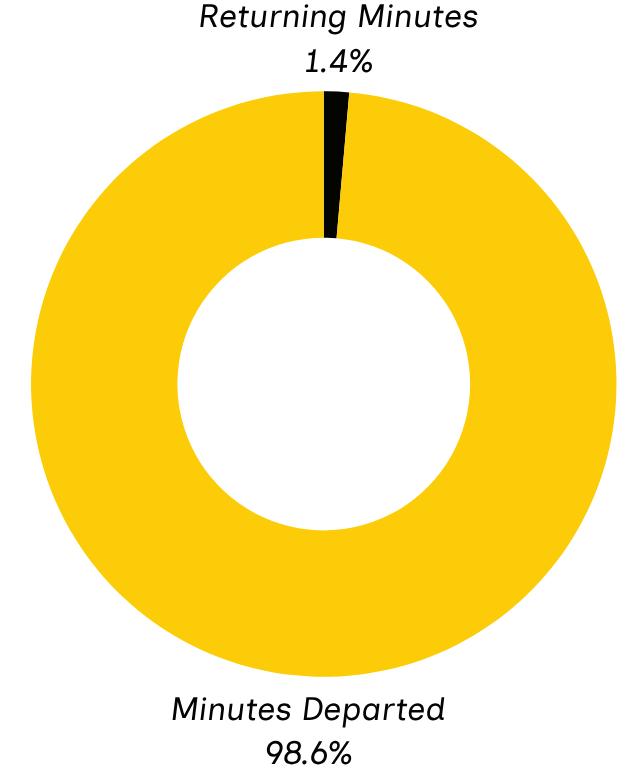
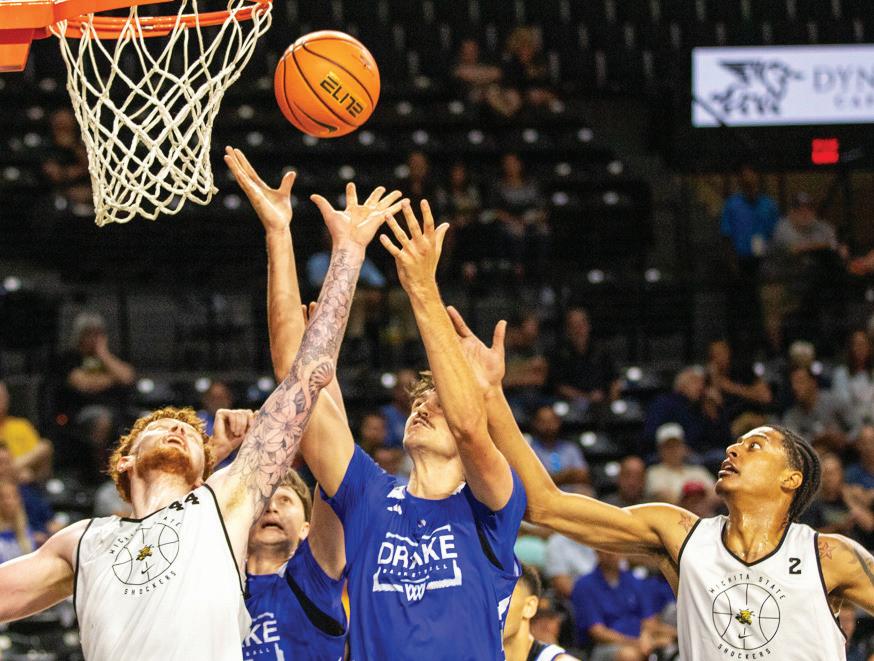
Will Berg and Emmanuel Okorafor are expected to find a larger role in the offense.
“They can be pressure releases,” Mills said. “Whereas in previous years, they (the big men) couldn’t be pressure releases. We couldn’t just throw to a (center) at the top of the key, and then have other action behind because that guy’s allowed to be a decision-maker.
“Quincy was phenomenal at being able to go catch stuff at places very few players could catch, and great defensively. But we can play through Will. We can play through Emmanuel.”
Gray added that Noah Hill, a freshman from Sunrise Christian Academy in Wichita, could be a third option at center. He said Hill has grown exponentially throughout workouts and practices.
“Just competing. He’s been able to get every rebound,” Gray said about what has stood out from Hill. “He’s been getting a lot of offensive rebounds. So I think as the season goes along, everybody will see that as well.”
Jaret Valencia, a Monmouth transfer, and Karon Boyd — who was the Southern Conference’s

Defensive Player of the Year in 2024 at East Tennessee State — are finding roles as defensive anchors.
With depth to go around, Mills is finding that he can run different combinations that he couldn’t in the past.
“We were just looking as a staff at what’s the most efficient twoman group, three-man combos, four-man, five-man,” Mills said.
“We’re north — which if you know anything about five-man combos, it’s really rare that you get 40 possessions by game five, game seven — and we have a lot more than 40 possessions of lineup combinations that we can kind of think through.”
Continuity on defense and in rebounding
Even though offensive output was at the forefront of recruiting, Mills said he still wants to keep the same defensive presence that led the Shockers to finish last season fourth in the American in scoring defense (73.09 allowed points per game), and first in defensive rebounds per game (26.88).
“The focus every day is, ‘Are we doing the things that I believe are
going to win basketball games?’” Mills said. “Rebounding the ball, taking care of the ball, sharing the ball. And kind of doing that with people that are committed to doing the right things, just as a day-byday issue. I think I’ve seen that.” Gray agreed and said that’s an expectation the team wants to uphold.
“We want to be the best team in the country in rebounding,” he said. “Be the best team in the country in rebounding, you’re going to be the best in the league. That goes for sure.”
Despite the influx of fresh faces on the team, their commitment has fostered chemistry. Mills said the team is gelling quickly — through competition, communication and building trust on and off the court.
This year’s Shockers aren’t just deeper, they’re unified.
“I’m a big believer that good people make good basketball players,” Mills said. “They’ve done everything right, and we’ll see how it goes moving forward.”
Wichita State opens its season Tuesday at 6:30 p.m. against UNC Asheville.
NEWCOMERS
n Karon Boyd, forward from East Tennessee State
n Kenyon Giles, guard from UNC Greensboro
n Jaret Valencia, forward from Monmouth
n Dre Kindell, guard from Barton Community College
n Brian Amuneke, guard from Fresno State
n Dillon Battie, forward from Temple
n Michael Gray Jr., guard from Nicholls State
n Tyrus Rathan-Mayes, guard from Legacy School of Sport Sciences
n Pierre Couisnard, guard from Legacy School of Sport Sciences
n Emmanuel Okorafor, forward from Seton Hall
n Noah Hill, forward from Sunrise Christian Academy
n Will Berg, center from Purdue
DEPARTURES
n Zion Pipkin, guard, transferred to South Plains College
n Corey Washington, forward, transferred to Southern Methodist
n Yanis Bamba, forward, transferred to Maine
n Quincy Ballard, center, transferred to Mississippi State
n Eight players graduated (AJ McGinnis, Xavier Bell, Ronnie DeGray III, Zane Meeks, Justin Hill, Matej Bosnjak, Harlond Beverly, Bijan Cortes)






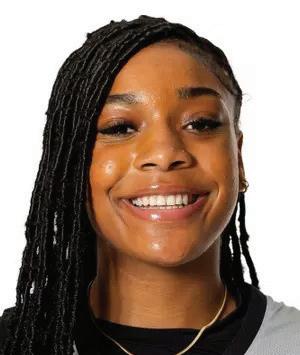

Guard | Gr. | 5’7”


Guard | R-Jr. | 5’6” 2025 Academic AllConference
Played in one game for the Shockers before redshirting last season due to injury
• Enjoys listening to Rod Wave





33 games played 252 field goals Wichita native; excited to be back in her community


Guard | Gr. | 5’7” Played for Langston University in 2024-25 season
• Started 32 games 12 point average Hopes to play overseas

Forward | Jr. | 6’2”
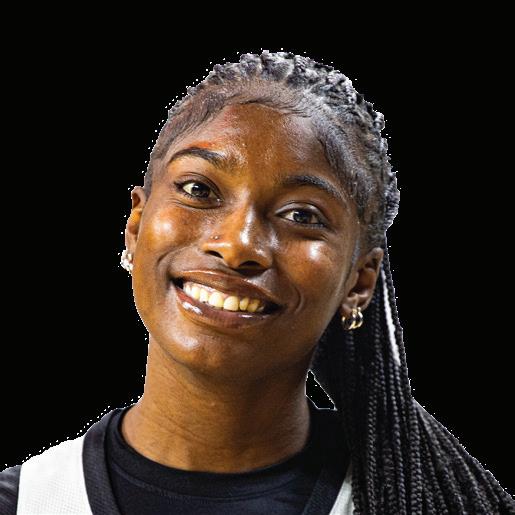
•

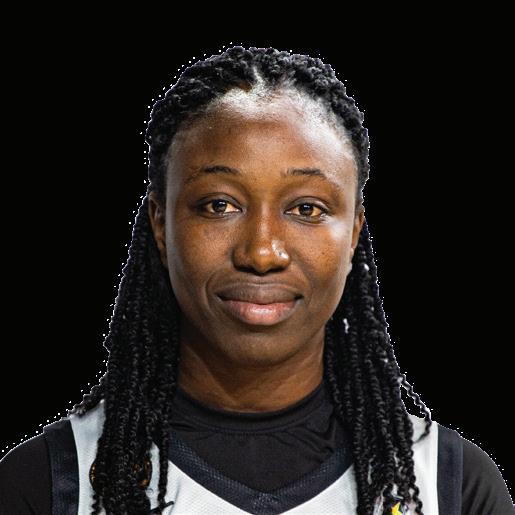

•
•
Guard
• One of four returners Redshirted because of injury Hometown is Chevilly Larue, Paris, France
• Enjoys reading comics

















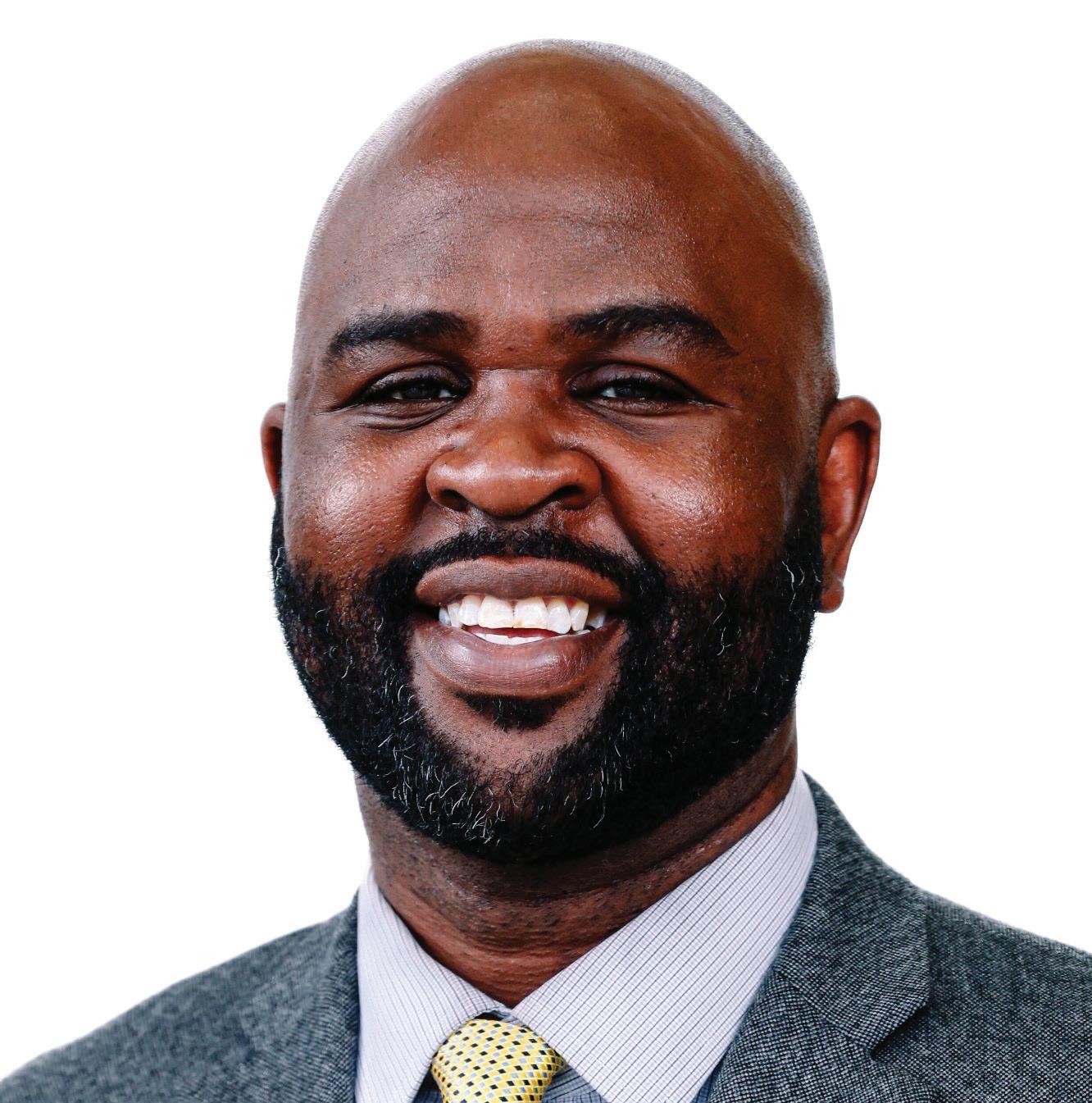






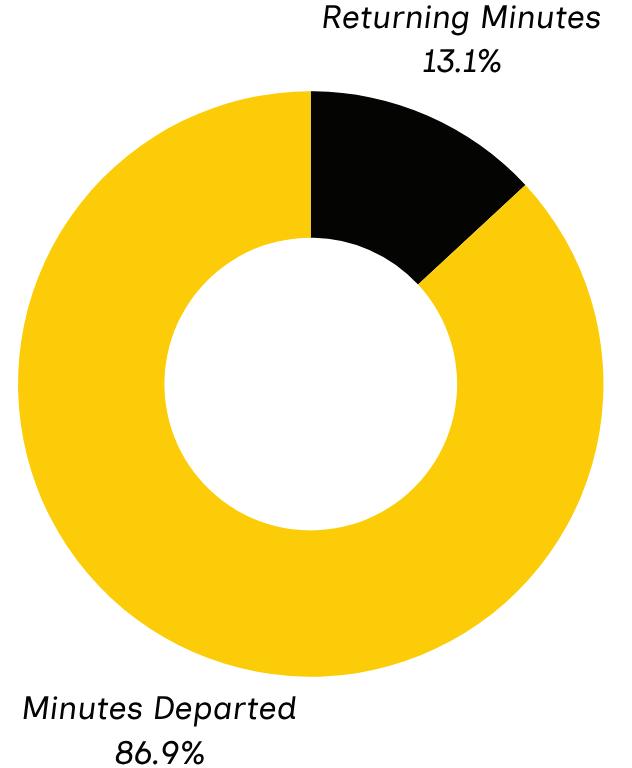

Newcomers
n Azjah Reeves, guard
From McNeese State
n Abby Cater, guard
From Austin Peay
n Jaila Harding, guard
From New Mexico State
n Diamond Richardson, guard
From Langston
n Bella Belong, forward
From South Plains College
n Jaida McDonald, forward
From Pensacola State
College
n Taya Davis, guard
From Fordham
n Treasure Thompson, forward
From Texas Southern
n Karys Washington, guard
From Coffeyville Community College
n Cheyenne Banks, center
From Central Arkansas
n Sophie Benharouga, forward
From Seattle University
Departures
n Ornella Niankan, forward
Transferred to Fordham
n Aicha Ndour, center
Transferred to Georgia
n KP Parr, guard
Transferred to Texas State
n Princess Anderson, guard
Transferred to Charlotte
n Jayla Murray, forward
Transferred to Ole Miss
n Jordan Jackson, wing
Transferred to Houston Christian
n Salese Blow, guard
Transferred to Texas A&M
n Jasmine Peaks, guard
Transferred to Longwood
n Three players graduated
(Taylor Jameson, Carla Budane, Ella Anciaux)
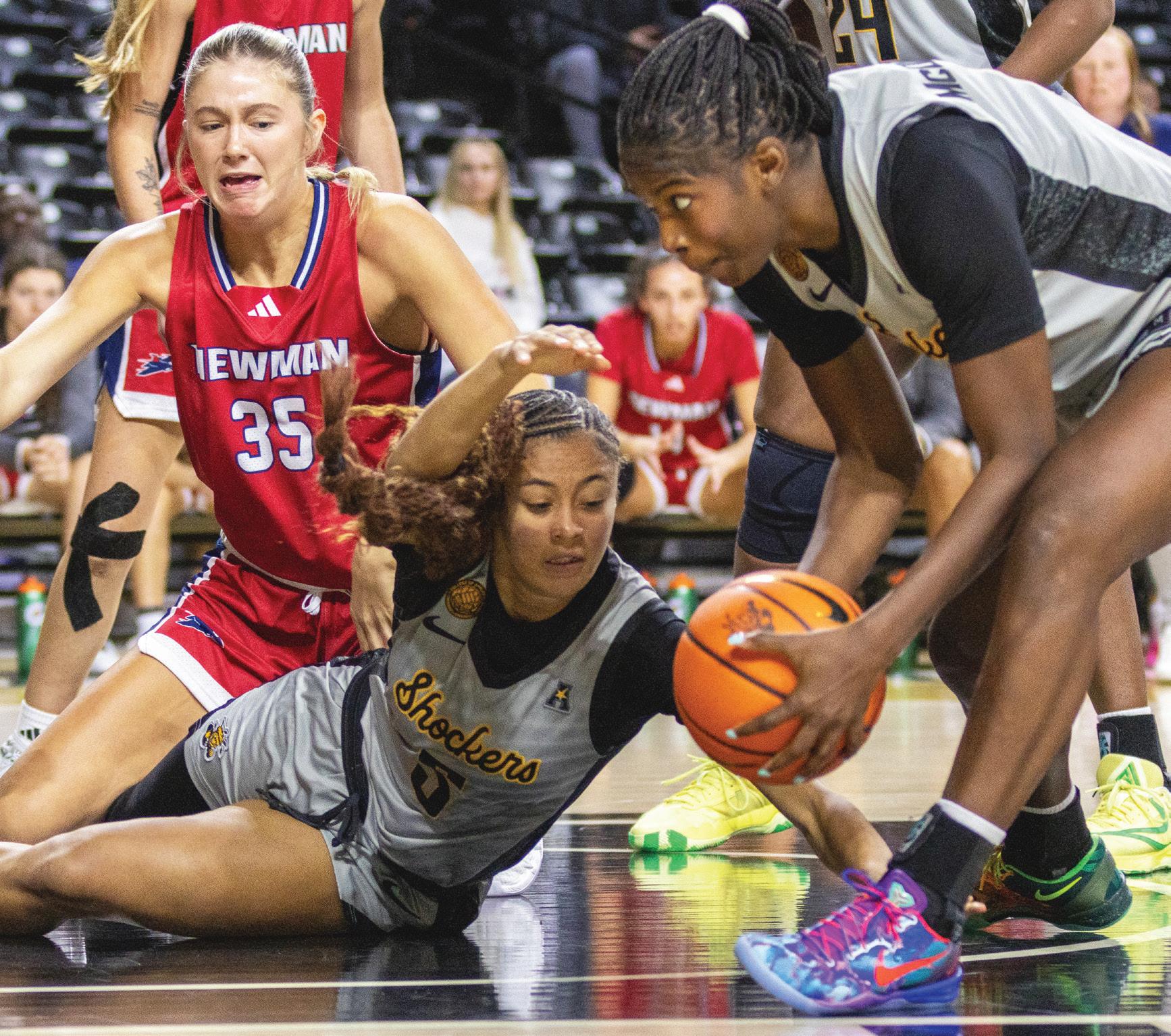
BY PIPER PINNETTI piperpinnetti12@gmail.com
After a major roster shake-up, Wichita State women’s basketball enters the 2025-26 season with a retooled roster and a renewed focus on chemistry, defense and winning – all under third-year head coach Terry Nooner’s leadership.
After eight players entered the transfer portal last spring, including Second Team AllAmerican Conference selection Jayla Murray and consistent scorer Salese Blow, the Shockers return just four players from last season’s lineup: guards Kyleigh Ortiz and Fiona Diomande, and forwards Bre’Yon White and Maimouna Sissoko.
Those four accounted for 9.6% of the team’s total scoring and 13.1% of its minutes last season, leaving Nooner and his staff to rebuild through the transfer portal and junior college ranks.
New faces, new focus
Among the newcomers is Wichita native and graduate transfer guard Jaila Harding, who returns home after stints at Butler Community College and New Mexico State. Harding brings experience and outside shooting – she led the Aggies in 3-point percentage (35.7%) last season and ranked fourth in Conference USA in threes per game (61).
“I mean, I think we all want to win a conference championship,” Harding said. “That’s the ultimate goal.”
For Harding, success this season comes down to teamwork and energy.
“I think, for me, that’s most important (winning a conference championship),” Harding said. “I’m all about the team, so us winning is most important to me.”
Harding said the team has focused on defensive intensity and transition play during early practices.
“We want to attack the ball, we want to trap, we want to get after it,” Harding said. “And then
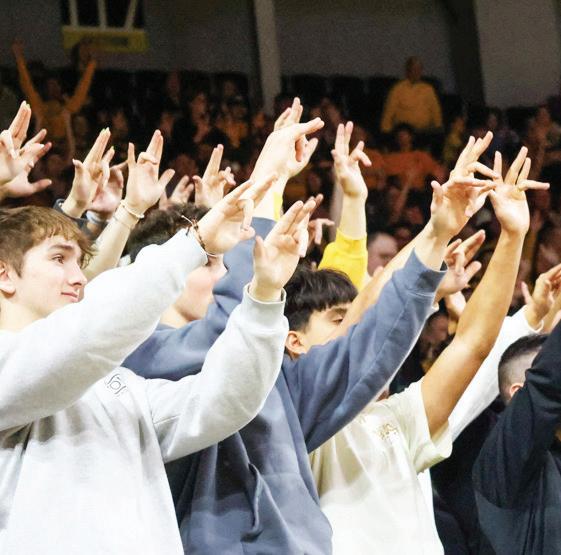
attempt against Tulsa on March 9. Wichita State men’s basketball shot 10-14 from the line in the loss.
Students can now claim men’s basketball tickets online
BY OWEN PROTHRO sports@thesunflower.com
Students at Wichita State can now claim men’s basketball tickets online as part of WSU Athletics’ new game day enhancements at Koch Arena.
One general admission ticket for home games is still free for WSU students and will be available until the ticket office runs out. Singlegame tickets will be available a week before tipoff at each home game.
WSU Athletics said on its student ticket information page that “students are encouraged to check their student email for notices about student tickets becoming available or visit the student ticket claim webpage.”
I’m all about the team, so us winning is most important to me.”
JAILA HARDING Graduate Student, WSU Women’s Basketball “
offense, we want to run the floor and get open looks in transition.”
The Shockers’ revamped roster also features graduate transfers Sophia Benharouga from Seattle University and Cheyenne Banks from Central Arkansas, as well as junior college standouts Jaida McDonald (Pensacola State) and Bella Belong (South Plains College).
McDonald led the Pirates last season with averages of 14.7 points and 9.5 rebounds per game and was First Team All-Panhandle. Belong averaged a double-double with 11.9 points and 11.1 rebounds a game.
Building chemistry
With so many new faces, off-the-court bonding has been a key part of the rebuilding process. Harding said outings like team trips to the Wichita farmer’s market have helped the group connect.
“I love the farmer’s market,” Harding said. “It’s not actually something I used to go to before I came back home, and now I’m getting the chance to explore it. And my teammates love to get out there and see what’s new in Wichita, and I’m right there with them.”
She said those experiences off the court translate to easier communication on it.
“Once you get to know the little things about someone, you understand how you can talk to them on the court, the way they best respond, and that’s extremely important in game situations,” Harding said.
Returner Bre’Yon White, who led Wichita State in rebounding in nine games last season, said the team’s energy and competitiveness already feel different compared to last year.
“I think everybody’s more competitive, more hungry,” White said. “(We) have a better drive and wanted to compete against each other, and then against each other as well.”
White said the transition for the newcomers has been “easier than expected.”
“I mean the whole team is pretty much new, except for four returners. We’ve been able to gel really well and we all get along,” White said. “We all have fun off the court. I think hanging out with each other and doing little things has helped us build our bond.”
White added that consistency and effort have been the team’s main points of emphasis in the preseason workouts and practices, with both veterans and newcomers eyeing the same goal — a conference championship.
“If you can keep a team from scoring and you outscore them, I mean you win in the end,” White said. “But just being aggressive on defense is our key. Just focusing on defense because defense wins games.”
Harding echoed that sentiment.
“Of course we want to be competitive on the court, we want to make each other better,” Harding said. “But off the court, we realize we’re here together — we’re all going through this together. It’s tough being a student athlete, but we’re basically sisters. And that’s important, it’s going to translate on the court as well.”
As the Shockers prepare for their first season together, both Harding and White agree on what would make it a success.
“A championship,” Harding said.
White nodded to growth and the same end goal.
“I would say getting the championship. I mean, who wouldn’t want that?” White said. “But also just being able to grow with each other, and improve our game overall as a team, and then individually for everybody.”
Students can still claim tickets in-person with a valid WSU ID at the ticket office from 9 a.m. to 5 p.m., Monday-Friday, and one-anda-half hours before tipoff when the arena opens. Tickets will be made available to the public should they not be claimed by a student 48 hours — two full days — before the day of a game. For all other ticketed sports — women’s basketball, baseball, softball, volleyball and track and field — WSU athletics said, “The Shocker Athletics Ticket Office provides Wichita State University students a free general admission ticket to all ticketed regular-season home events. All Wichita State students must show their student ID at the venue’s box office on the day of the event beginning one hour prior to the event’s scheduled start time.” Wichita State men’s basketball’s first game is Tuesday, Nov. 4 at 6:30 p.m. against UNC Asheville.
n Visit GoShockers.com/Tickets, select the “Student Tickets” tab n Click “Sign in as a student” and log in with your WSU credentials (WSUID@wichita.edu)
n Select the game(s) for which you would like to claim a ticket
n Claim your complimentary ticket, and if desired, add guest tickets to your cart as well
n Once your tickets are added, select “Checkout” and complete your order
n After
ticket and any purchased student guest tickets scanned for entry. Find an open seat in the Student Section located in sections 116 & 117
n NOTE: Please carry your WSU ID with you at all games to verify eligibility for sitting in the student section
Info taken from goshockers.com


BY KAMI STEINLE steinlekami@gmail.com
After experiencing diverse walks of American life, Jaret Valencia ended up in Wichita to play basketball at Wichita State. But Kansas isn’t as unfamiliar to him as one would think.
Born in Quidbo, Colombia, Valencia moved to the U.S. as a child and lived in places such as California, Tennessee, Texas and New Jersey.
“Cali is beautiful, but it’s very expensive. Everything is like, high end and stuff like that. It wasn’t like my vibe. Tennessee was too cold and like, basically the middle of nowhere,” Valencia said. “Texas felt like if it was Colombia, that’s the closest thing to Colombia. When I was in college in New Jersey, (it) felt like home too. There was a lot of Latinos there.”
His first year of high school was in California, then he moved to Tennessee. Valencia’s final two years were in Houston, where he attended the Legacy School of Sport Sciences and helped his team win back-to-back Texas 6A state championships.
“I started playing basketball because I was getting taller too fast,” Valencia said. “And my dad played basketball … so everybody was like, ‘Oh yeah, you’ve got to play basketball.’ But I’ve really got a passion for soccer. I’m not too good at it, but I love watching soccer more than I enjoy watching basketball.”
While playing basketball in Texas, he played for WSU assistant coach PJ Couisnard. He moved to New Jersey for his first year of college at Monmouth University, and then came to WSU for the 2024-25 school year. Couisnard was hired to be assistant coach in May of this year.
“It’s (Valencia and Couisnard’s relationship) a type of big brother, big uncle. I played many roles with Jaret, coach, friend, best friend sometimes worst friend. I just love him to death,” Couisnard said. “When he picked us (WSU) over Syracuse and Arkansas, I think it was the best thing that could have happened … and just to get the chance to coach him again, you know, we didn’t think it would happen again, so you never take that for granted.”
Valencia lived with Couisnard during his time in Houston, too. Couisnard said it was “a fun experience.”
“When he first moved in with me, he couldn’t speak English very well. His English was really, really bad,” Couisnard said. “So he watched a lot of movies, music videos, rap videos. Just talking trash to him everyday helped him learn, like get his English to where it is today.”
When comparing the places he’s lived, Valencia said Wichita is “very quiet.” He also said that he’s grateful to be working with Couisnard again because they’ve “been through a lot together.”
“Colombia is a very beautiful country … a lot of great people there. It’s very nice and they’re going to make you feel like you’re at home,” Valencia said. “... (Wichita) it’s a really very quiet place I like because I get to focus on my dream and do what I like.”
BY EVAN TONG evantong3@gmail.com
A new frontcourt pair has arrived on Wichita State’s campus with the likes of Emmanuel Okorafor and Will Berg.
“They are fantastic, they are mobile,” said Joy Ighovodja, a junior guard on the men’s basketball team. “They run faster than any big that I’ve seen.”
Okorafor and Ighovodja have known each other for five years, stemming back to their time in the NBA Academy Africa program. They’re both also Nigeria natives. Berg, on the other hand, is from Sweden, having transferred from Purdue University over the offseason for his junior year.
“We all vibe with each other,” Berg said. “I feel like there’s no cliques or anything. It’s just a big group of people hanging out with each other. Me, Noah and Manny, I feel like we get a little bit of a closer relationship, since we’re doing drills together all day, practicing together, we work out together. Those are the faces you see the most.”
Okorafor, affectionately known as “Manny,” transferred from Seton Hall for his senior year, having also
previously played at Louisville. Spending time with teammates over the offseason, Okorafor explored Wichita, a far cry from his home of Lagos, Nigeria.
“My favorite part of the city so far, I don’t know what they call it in downtown, the Brother’s Keeper (Keeper of the Plains). I call it the Brother’s Keeper,” Okorafor said. “It’s cool, like somewhere you can just go and walk around, and just clear your mind and just see the views.”
Okorafor’s introduction to the city also included a new barber by the team’s local guide, redshirt freshman TJ Williams.
“He’s been a really big help when I came here,” Okorafor said. “He’s the one that got us a barber for haircuts and stuff. He’s been showing me around.”
With a busy basketball season coming up and the fact that these players will be spending most, if not all of their time together, they said it just makes sense to be friends.
“We live together in one big apartment. We all stay at Seventeenth,” Ighovodja said. “We see each other every day. We’ve been to (escape rooms) ... My
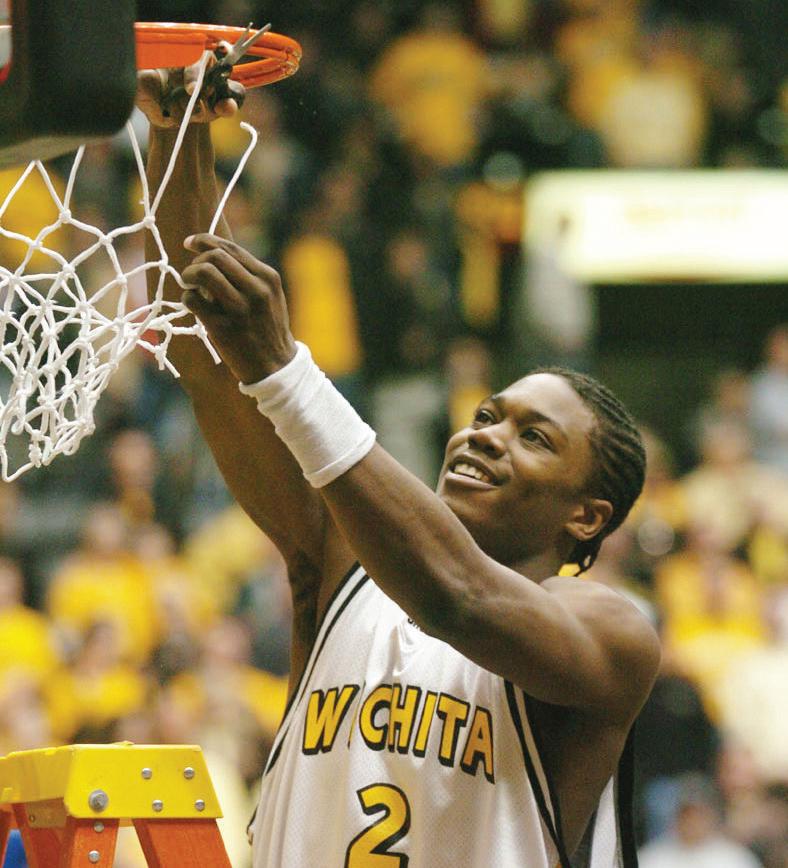
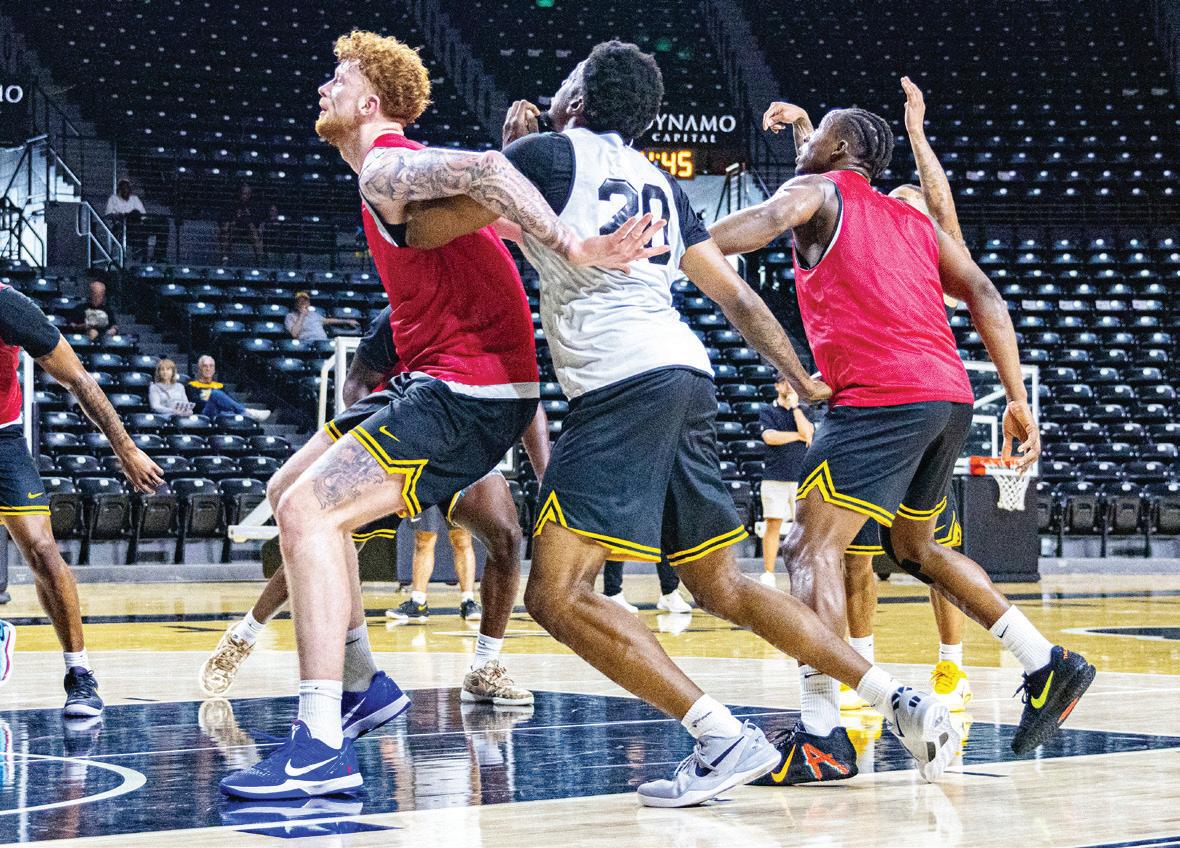
group won, but it’s hard because you’re trying to find stuff, and not everyone is going to agree with each other, right? We have to learn how to work together and make everyone’s opinion valuable.”
The importance of brotherhood and family is seen on Berg’s tattoos as well.
“These are my parent’s names, Martin and Jessica,” Berg said, pointing to his left arm. “My mom, she loved lilies, so my arm
is covered in lilies and it goes down my back, too. I have a good portrait of me and my dad on my chest, and some pictures of me and my mom on my leg.”
For these new faces, Ighovodja said it was important to put the team above themselves as individuals.
“We just got to play for the name in the front, so that you can all know the name in the back,” Ighovodja said.

Pierre Couisnard following in his father’s footsteps, setting himself apart
BY AINSLEY SMYTH managing@thesunflower.com
Pierre w and his father PJ (also Pierre) share much more than a name. Pierre, a freshman guard on Wichita State’s men’s basketball team, is following in the footsteps of PJ who played for the Shockers from 2003-08 and is now an assistant coach at his alma mater.
“I chose the Shockers because it felt like home,” Pierre said. “I was here when my dad played. I was just around it a lot, and I liked it. They supported me, and they told me how they could make me a better player.”
Pierre remembers watching his dad’s games at Koch Arena. His father also coached him for most of his life.
PJ said he felt he should never force Pierre to play basketball if he didn’t want to, but it was a “dream come true” to have Pierre fall in love with the sport and eventually, come to play for the Shockers.
“Soon as he was born, first thing I did was put a basketball in his little thing that they put him in,” PJ said. “I put a basketball right in there. I was like, ‘This is for him.’ And so we was at it every day when he was little. He was learning – he knew how to dribble with two balls at like 3 (years old) – and just, you know, he loved it.
“... His uncles and aunties, they played college basketball too. So he just got the example every day. So seeing it every day makes you want to be a part of, and I couldn’t be more proud of him than the person he came out to be.”
The path to Koch Arena wasn’t easy for Pierre. He suffered a knee injury when he was 11 that took him out of the game, and threatened to derail his career. Pierre was playing in a
tournament when he crashed into a wall, fracturing his knee in two places. He had surgery and couldn’t walk or put weight on his knee for eight months. Then, his doctor noticed his knee was healing wrong, and Pierre had to have another surgery in which his knee was intentionally re-broken so that it would heal correctly.
The journey, from surgery to
He’s a strong kid, stronger than I ever was, just to get to where he’s at today.”
PJ COUISNARD MBB assistant coach
learning to walk again, with and then without a supporting metal frame – and then repeating the process all over again – was tough for Pierre. But, he said, his family kept him optimistic.
“My family and my team, my mom, dad, all of the people that helped me and supported me through the way, kind of gave me the energy and the support I needed to be here,” he said.
“So it was – it was an experience, I could say that,” he added with a laugh.
PJ said while Pierre’s future was in limbo, he and the rest of the family made sure to never let him lose hope.
“We definitely – me and his family ... definitely kept the faith in him and (did) not let him get weird and not let him think it wasn’t gonna happen for him,” PJ said. “So, you know, he was just watching every – all his friends keep playing, and cousins and family and all that continue to play, and he never got discouraged.”
PJ said that’s just the kind of person Pierre is – someone who “can kind of handle anything that’s thrown at him.”
“He’s a strong kid, stronger than I ever was, just to get to where he’s at today,” PJ said. “And he’s always been a great kid, funny kid, cracking jokes, and you know, just always believed in himself and never stopped believing in what he could do.”
PJ has coached Pierre for years, all the way up through his career and injury.
“I was his coach in high school too. Like I said, he didn’t get a chance to play ninth grade, 10th grade, and basically the last five games of his junior year,” PJ said. “But coaching him in his senior (year) man, he was – we would talk every day, you know, about things that he wanted to do and things he needed to do. And so he was – he was easy, man, he was easy. Just, you know, once you’ve been through stuff like that … you don’t take anything for granted.”
Redshirt junior Jaret Valencia also played under PJ in high school and got to know his family well, even living with them for a couple of years.
“They great people,” said Valencia, who’s from Colombia.
“I lived with P (PJ) for two years because I played high school for him, and he always treated me like family and everything. I actually lived with him when I didn’t speak English that well too. So I got – I learned a lot of English from Little P (Pierre) and him.”
Valencia said while PJ and Pierre are father and son, “they act like they were brothers.”
“They got a great connection,” he said. “They talk to each other –like they got great communication between them. It’s cool to be
around both of them, too. I like that. Seeing PJ as a dad made me realize that that’s how I want to be with my kids.”
The coaching dynamic could easily put a strain on a father-son relationship. But PJ and Pierre said they make sure to never let it affect their bond.
“We never take it home, never,” PJ said. “I’ve been coaching basically his whole life and I was part of sports where I’ve seen parents lose their relationship with their kids over sports, and I never wanted to be one of those guys, so I always value me and my son’s relationship over our sports success.”
Pierre said his dad coaching him for so long makes it feel normal to have him now. His father’s coaching and advice have helped him get to where he is today. The best advice he’s gotten from PJ, Pierre said, is to “be humble, respect people and try to be open minded with learning new things on and off the court.”
It’s yet to be seen where that advice, and his own hard work, will take the freshman – his goal is to make it to the professional level.
“He’s getting better and better every day,” PJ said “I think, just, you know, enjoy the process. Know it’s a process, and just continue to be in that process. I think – who knows where it takes him. I know he’s grateful for everything. So you know, who knows.”
It’s safe to say there are a lot of things the Couisnards have in common, even outside of Shocker basketball.
“We’re similar in the way of humor,” Pierre said. “He makes jokes all the time, and me too.” And how are the two different?
“I got more style than him,” Pierre said with a laugh.
BY MACK SMITH mackred22@gmail.com
Last season, redshirt junior guard Kyleigh Ortiz only played one minute against Oklahoma Christian before an injury ended her season.
“It was definitely hard,” Ortiz said. “There was a lot of mixed emotions, but I think for me just getting back on the court again, it’s helping me bring back what I was doing before.”
In Wichita State’s exhibition against Newman on Wednesday, Ortiz swished a 3-pointer as the game clock was winding down. It was Ortiz’s first basket during a game in the last 364 days.
“It felt really good,” Ortiz said. “It was a boost of confidence for me for being out so long. I think it just helped me get more confident and feel more comfortable on the court.”
Graduate student forward
Bre’Yon White added that it was awesome seeing her return and be able to add an impact.
“I really love her,” White said.
“Especially being a returner, we’re really close. We hang out a lot, and just to see her back out there means a lot for me personally, and I know it means a lot for her.”
Before Ortiz was a Shocker, she played at Coffeyville Community
College, a JUCO in Kansas. In her two seasons for the Red Ravens, she appeared in 65 games, while starting 60 and averaging 9.7 points and shooting 37% from beyond the arc.
“I think just by the coaches’ believing in me and then they brought me in here to shoot. They could see what I could do,” Ortiz said about how her success at the JUCO level will translate at the Division I level. “So I think that I just have to keep doing what I was supposed to do — to shoot the ball when I can, and knock down shots.”
In her two seasons at Coffeyville, Ortiz finished twice in the top seven of most made threes in the Kansas Jayhawk Community College Conference (KJCCC). The Shockers struggled with long-range shooting last season, knocking down 27.5% shots from deep. The mark was the second-lowest in the American Conference.
Wichita State head coach Terry Nooner said the team felt her absence last season.
“Kyleigh is a knock-down shooter, which is something we truly missed last year with the way people just kind of packed it in against us all the time and played zone,” Nooner said. “She can go 20 minutes and not get a shot just because people are taking her

out of the game, but then when she gets her opportunity, she just knocks it down.”
“She’s a really fantastic shooter,” White added, “So, it’s just easy. For me, sometimes I joke around and I say, ‘If you shoot the ball I’m not rebounding, I know it’s going in, so I can go ahead and get back on defense.’”
BY TALIYAH WINN editor@thesunflower.com
Before Antwain Scales ever joined Wichita State’s women’s basketball’s coaching staff, his daughter, Kameir, had already sought out her place on the team — as a student team manager.
“She actually applied for the position under the last administration,” Antwain said. “... Ultimately and ironically, just transitioned to where we ended up getting hired here the following year.”
In her role as a team manager, Kameir prioritizes showing up for the girls.
“Just making sure they have everything that they need,” Kameir said. “Whatever they need, just being there, getting it clear for them, stuff like that.”
Kameir is in her senior year studying sports management. She joined the staff in 2023, the same year Antwain was hired as assistant coach.
Before coming to WSU, Antwain made his mark in the local basketball coaching scene. He started by coaching his girls, which developed into creating a middle school league, and later spent seven seasons as the head girls basketball coach at Wichita South High School.
Antwain said that his “in” to basketball came through coaching his children, including Kameir.
“It was my middle child (Mauri Scales)” Antwain said. “She was involved with basketball and interested in basketball, so I started coaching. And I think just the other girls… came along by default.”
Kameir started playing basketball at 5 years old, with Antwain as her coach. She continued to play up until ninth grade, when she made the switch from playing basketball to focusing on volleyball.
“I played (basketball) in ninth grade, but then that’s when I stopped my journey and just realized that I wanted to be a manager,” Kameir said. “Still involved with basketball, but just being a manager on the side and not playing. But then I just took it from there.”
From there, Kameir became a basketball manager for the team until she graduated.
“I was a volleyball manager at Dodge City Community College, and then after that, I transferred
here and I’ve been a manager for three years here,” she said.
At Wichita South, Antwain helped lead the program to four consecutive 6A State Championships, compiling a record of 152-18 (.894 winning percentage). After Wichita South, Antwain coached at Colby Community College before moving to Garden City Community College and then returning to Wichita.
“(Head coach Terry) Nooner got the job here and asked me to come back and join the staff,” Antwain said. “So it’s been a complete journey, multiple years involved.
Countless student athletes that are, you know, Wichita grown and been a part of Wichita.”
Kameir said that working with her dad is a blessing.
“Seeing both parents every day and seeing him when I come here,” Kameir said, “it’s a blessing for me.”
Antwain admitted that at work he tries to treat Kameir the way he would treat anyone in her position — as a professional.
“She probably don’t really recognize this, but I try to not even act like she’s my daughter and just try to treat her like anyone else,” Antwain said.
Kameir also said that she feels that they maintain a professional relationship at work, leaning more into their roles.
“I feel like we don’t act too clingy as dad and daughter,” Kameir said. “… When we have practice or games, it’s more of like coaches and management.”
Antwain practices balancing the day-to-day roles they play, along with helping Kameir navigate the professional world of basketball.
“I try to stay out of her lane and try to let her grow and develop as a person,” Antwain said. “And trying to navigate through, if this profession is really going to be truly for her.”
Antwain recognizes the importance of being able to spend time together in a professional context.
“We get to communicate only in this profession as far as basketball is concerned from the business perspective, but outside as well,” Antwain said. “So it’s been important for me because, again, a lot of times, especially with coaching, you don’t get a lot of opportunities to be able to see
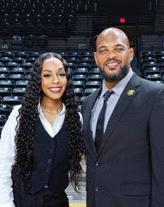
your kid.”
As a father, Antwain said watching Kameir grow is bittersweet.
“Because having your daughter around is always a priority of importance,” Antwain said. “But being proud of her being able to grow and develop outside of Wichita State and leave, or what they would say ‘leaving the nest,’ as being able to explore her goals and opportunities and what’s going to be beneficial to her in life.”
After graduation, Kameir already knows what her next goal is.
“I want to be a director of operations,” Kameir said. “But it’s just kind of more of finding the next school where to go to, since I’ve never been out of Wichita for real.”
As a father, Antwain recognizes the importance of this opportunity for Kameir.
“It’s a great experience to be able to have my daughter alongside,” Antwain said. “... And hopefully, if she chooses this career pathway, it might be a good opportunity for her as well, not only to get her education, but also professional as far as coaching.”
Both of them, along with the team, agree on one thing. The goal is always to win a championship.
“Ultimately, it is to not only win a conference championship, but a national championship,” Antwain said. “I think anybody who doesn’t have their sights on that common goal is doing themselves a disservice as well as their team. I mean, we try to work hard every day to be the best version of ourselves and to be able to compete and represent Wichita State.”
One thing about me is I’m all about loyalty,”
KYLEIGH ORTIZ Redshirt junior, WSU women’s basketball
Ortiz is one of four returners from last year’s team. A majority of her teammates last season transferred or graduated.
“One thing about me is I’m all about loyalty,” Ortiz said. “So, I think just staying after an injury is just being loyal to the coaches and just having a fresh start again just to help the team out in any way I can.”

BY OWEN PROTHRO sports@thesunflower.com
Jaila Harding called it the “famous FaceTime.”
When she called Terry Nooner to announce her commitment to Wichita State’s women’s basketball team, the Shockers’ head coach was so excited he began to scream.
“He said he was in the airport, but I guess he didn’t care that people were watching him,” Harding said with a smile.
The graduate transfer’s commitment meant more than just Wichita State’s first in the transfer portal over the offseason. It’s a return to her roots. Growing up in Wichita, Harding said she can remember watching the Shockers play in Koch Arena ever since she was 6 years old.
“It’s super special to be able to be the one on the floor this time,” she said. She felt like Wichita State was the right fit not only because it’s her hometown team, but because of the connections she made during her recruiting process.
Assistant coach Antwain Scales recruited Harding out of Wichita Southeast High School when Scales coached at Garden City Community College. She said she already trusted his vision as a coach.
“And I loved the conversations I had with Nooner,” Harding added.
“I knew we would have a good connection, and that we could make something happen with this Wichita State women’s team.”
Harding can also fit a muchneeded area for the Shockers: scoring, especially around the perimeter.
Wichita State ranked 11th in scoring and field goal percentage in the American Conference last year. The Shockers were 12th in the conference in 3-point shooting. They lost their top three scorers — Jayla Murray (12.4 ppg), Salese
Blow (12.1 ppg), and Princess Anderson (9.4 ppg) — to the transfer portal.
“We want to improve our 3-point shooting,” Nooner said. “We want to improve our defense. We want to improve our rebounding. And I think we did that with the players that we brought in.” Harding began at Butler Community College, where she averaged 9.2 points and wasn’t afraid to shoot it from deep. She shot 31% from beyond the arc but attempted 258 threes across her two seasons for the Grizzlies. In two seasons at New Mexico State, she knocked down 122 threes and raised her percentage to 35.7%. Nooner praised her ability to find multiple ways to score.
“She’s not just a spot-up shooter, too,” he said. “Like, she can run off screens, double screens, stagger screens, down screens, flare screens. She can shoot off of movement. And then, she also can get to the basket and score. She has a nice pull-up game.
“She’s a three-level scorer. But her ability to shoot opens up the floor for the rest of our players.”
Not only does she bring a strong game on offense, but she also brings the attitude of a seasoned veteran. Bre’Yon White, also a graduate student and a returner from last season, sees that as one of Harding’s biggest assets for the team.
“She’s seen a lot,” White said. “(She’s) able to help the younger kids, just with her knowledge and stuff. And then, she’s just someone that is open to critiques and criticisms.”
From watching the Shockers in the stands to the “famous FaceTime” to playing on Koch Arena’s court, Harding’s homecoming is one that could punctuate her career right where it all began.



BY MALEAH EVANS arts@thesunflower.com
WuShock is a common sight at Wichita State sporting events and in the wild on campus. But, there is always speculation: Who is the person behind the mask?
There are usually multiple people who don the mask at the same time to divide time between sporting events and general WuShock appearances.
Josh Nichols was one behind the mask from August 2018 to December 2020. He said he tried out to be the mascot because he realized he had “nothing to lose.”
“I just tried out, and I got the part, and had an absolute blast doing it,” he said. “Interacting with the team was always fun … and then we’d have the women’s basketball games where you’ve got 8,000 kids. It’s just an absolute blast doing that.”
Zach Cerre acted as WuShock from 2019 to 2023 after being the mascot at his high school. “I wanted to continue my career as a mascot,” Cerre said. “(I loved) interacting with fans. I loved working with kids. I’m a teacher now … my students call me ‘Mr. WuShock.’”
Cerre now teaches pre-K through eighth grade technology, and seventh and eighth grade social studies at All Saints Elementary School in Wichita.
Another former Wu, Seth Hokanson, played his part from Spring 2020 to Spring 2025.
“Originally, I had applied because I was told there was a pretty decent scholarship,” Hokanson said. “That was not the case … after I got into it, I realized the enjoyment of it and how much I did actually enjoy doing it.
“I felt confident enough in the suit that I could walk into any building in Wichita and get into any part of any building … I’m not from Wichita originally, so there were some places and venues that I got to off-site events for, and I’d never been to before.”
While wearing the suit, Nichols was able to travel with the men’s basketball team to New York City for the National Invitational Tournament in 2019.
“That was a fun trip,” he said. “Unfortunately, the team lost the first game and didn’t stay for the second one to win the championship.”
Hokanson also got to travel while donning the WuShock costume. He went to places like Kansas City, Mo., and Fort Worth, Texas, and got to be on the floor with other spirit squad members in the American Conference tournament one year.
Dillon Battie’s small habits are building bigger role at Wichita State
BY OWEN PROTHRO sports@thesunflower.com
Paul Mills knew where sophomore transfer Dillon Battie’s head was during a one-on-one meeting after Wichita State’s scrimmage against Santa Clara on Oct. 18.
Mills recalled the first two questions Battie asked were, “How do I grow?” and “How do I help the team win?” The Shockers’ thirdyear head coach appreciated the mindset immediately.
“The number of times I’ve had players ask to meet that come in with more than one agenda … I can count on one hand,” Mills said. “I can think back to players that have done it — they’ve all been really good players.”
For Battie, the goal of the meeting was simple. For Mills, the message was clear. Battie wanted to know how he could impact games, and how he could help propel Wichita State to a successful start to the season with Tuesday’s season-opening tipoff against UNC Asheville looming.
“There’s a lot of players that want to be the best player on the team, and they don’t necessarily want to be the best player for the team,” Mills said. “He was asking, ‘How do I be the best player for the team? Like what are the things that I need to do, and not only in my own gain in order to add value, but in order to contribute to winning?’ And just that’s the right mindset.”
help balance. His experience with the eye in the sky is helping Battie pick up small details that go unnoticed during games.
“You can totally watch and dissect your game down to a T,” Battie said. “You get to improve, that’s how you get better.”
After practice, he’ll go home and watch the film by himself and take notes on what went well and where he needs to improve going into the next practice. It’s those little things that will help better himself and the Shockers.
“The next day coming in, that’s what’s on my mind,” Battie said. “I’ll be like, ‘How can I make sure that my hands are up and I’m in the right position?’ or maybe if I missed somebody on a pass, ‘How can I get the ball to them next time?’”
Even since workouts in June, he’s consistently one of the first people at film sessions, eager to absorb every frame. Battie’s willingness to show up early goes back to what his parents taught him as a kid.
“They always taught me to be punctual. Early’s on time,” Battie said. “Every day we start, I’m just making sure I’m there early so I’m attentive and have my mind locked in on the film.”
That kind of work ethic is starting to rub off on the rest of his teammates. Junior Dre Kindell, also a transfer and an early bird at film sessions, said it helps to build good habits.
“
You, the student
body, are the true WuShock. I was merely the one leading you those four years.”
ZACH CERRE WuShock, 2019-2023
“The places I got to go, and see and do,” he said, “I have a better understanding of the layout of Koch Arena than most people do because I’ve lived in there practically.”
Mascots need to warm up, too
During game days, it gets hot inside the suit and so some performers have a small routine they perform before getting in.
“I would stretch, drink some more water, warm up and then I would always be at the door ready,” Nichols said. “About 20 minutes before the game, going back down, taking a breather because it gets hot in the suit … (It) can be like 110 degrees almost every game, I was losing about 15 to 20 pounds in water.”
Cerre had a similar routine, but he would also jump around and get active before the games started. Hokanson also had his own mental routine before performing.
“I just took a second and took a deep breath and just sometimes verbally said, ‘I am no longer Seth, but I am Wu,’” Hokanson said. “I truly had to try to take on that mindset of high energy, big bad bundle of wheat.”
‘It’s supposed to be the character’
There’s a secretive element to wearing the suit, though some mascots let family and close friends in on it.
Nichols said he was a commuter student, so a lot of his time was spent with the Spirit Squad, but his family and a couple of close friends outside the squad knew about his job.
“Honestly, I prefer keeping it a secret rather than taking the spotlight away from WuShock and making it (about) myself,” Nichols said. “It’s supposed to be the character … it’s not about yourself, it’s about the school and the university and WuShock the character.”
Hokanson tried hard to keep the secret, because he felt like people knowing would change the perception of how people viewed both him and WuShock as a character.
“It’s not life or death for
anyone to know that you’re the mascot,” Honkanson said. “If you have a reputation, that’s good or bad or otherwise, or you make mistakes in your life as we all do, if that’s a secret you’re a mascot, it doesn’t tie back to the mascot.”
Looking back – the good and the difficult
Nichols said that he loved his time as WuShock, and that he wanted to continue it professionally, but it didn’t work out.
“It was definitely worth it. I loved every single part of it,” Cerre said. “You, the student body, are the true WuShock. I was merely the one leading you those four years.”
Hokanson said that overall, donning the suit was an enjoyable experience, but some aspects, like the lack of a designated mascot team coach and a lack of management, were difficult.
“(We) fall under the coaching of the cheer coach … previous coaches didn’t really care, didn’t really want to take care of the mascots, so we had kind of fallen to assistant AD Tami (Cutler) … that’s outside her scope of work, that’s not in her job description,” Hokanson said. “At the end of my time, I was telling Tami and anybody who listened, ‘Hey, we need a coach … there is a guy who is willing and wants to coach.’ We told them that and no one has taken the steps moving forward with making that happen.”
Hokanson talked about meetings that he had with the athletic department before graduating and expressed his disappointment with the end of some of the conversations.
“I sat down and talked to Kevin Saal about the mascot program and the answer I pretty much got back was the university is charged with the task of trying to win championships in the 15 or 16 university sports we have and we’re not one of them,” he said. “Which is frustrating; there were times when it felt like the university didn’t really care about us or for us … the mascot program, it’s tough to call it a program when there’s not really a coach (and) is the redheaded stepchild of the redheaded stepchild of athletics.”
WuShock may not get all the support other athletics do, but that doesn’t diminish the importance or impact Wu has on the games, and the people behind the mascot.
Even with a small sample size at Temple last season (41 shot attempts in 155 minutes played), associate head coach Kenton Paulino called Battie a “raw talent” during a Roundhouse podcast earlier this month. Mills said that he can score with the best on the team, but needs to play more under control.
Battie admitted that through watching film, he’s realized what Mills meant by playing more under control. Since then, he’s focused on playing off two feet, using pump fakes and has utilized workouts to
“On and off the court, there’s no way you can’t be successful, right?” Kindell said.
Battie’s raw talent may still need refining, but his approach — grounded in curiosity, discipline and team-first thinking — is already helping shape his role.
“A lot that he does is just off straight raw talent,” Kindell said. “So, him working out and everything, being early to workouts and things like that is going to really improve his game.”
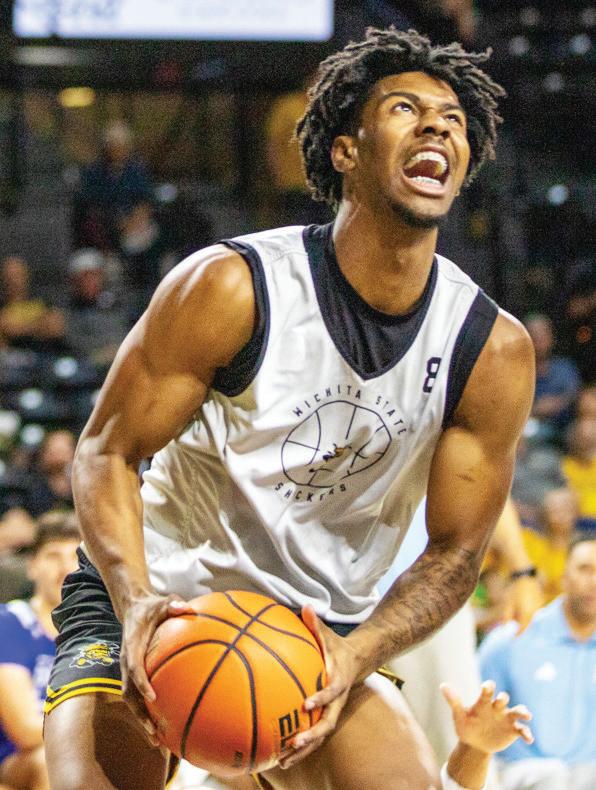
VOLLEYBALL LEAGUE STANDINGS AS OF NOV. 4
1. Rice: 11-1 Conference, 15-8 Overall, 11-game win streak
2. South Florida: 10-2 Conference, 13-9 Overall, 1-game losing streak
3. North Texas: 9-3 Conference, 19-6 Overall, 2-game win streak
t4. Tulsa: 8-4 Conference, 18-6 Overall, 2-game win streak
t4. Florida Atlantic: 8-4 Conference, 17-8 Overall, 1-game win streak
t4. Wichita State: 8-4 Conference, 16-8 Overall, 2-game win streak
7. Charlotte: 6-6 Conference, 15-9 Overall, 4-game losing streak
8. Temple: 5-7 Conference, 15-10 Overall, 4-game win streak
9. UTSA: 4-8 Conference, 11-12 Overall, 4-game losing streak
t10. East Carolina: 3-9 Conference, 11-12 Overall, 3-game losing streak
t10. UAB: 3-9 Conference, 10-14 Overall, 2-game win streak
12. Tulane: 2-10 Conference, 10-13 Overall, 1-game losing streak
13. Memphis: 1-11 Conference, 10-17 Overall, 6-game losing streak

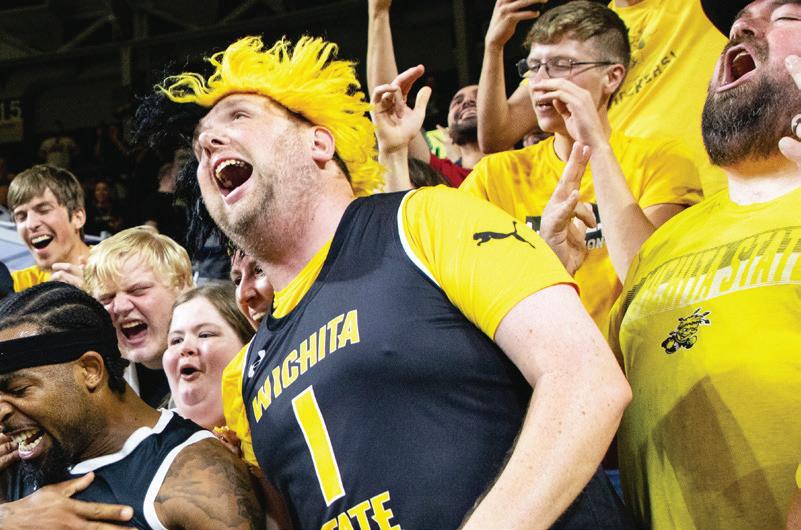


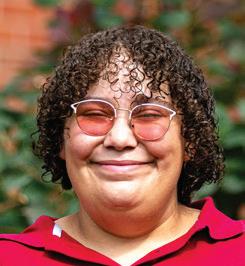
The scent of popcorn and nacho cheese filling the air.
Looking your opponent’s fanbase in the eyes as one of your players dunks, scoring the tie-breaking point after three overtimes.
These are things that the live, in-person basketball experience provides better than watching basketball on a boring TV screen.
I watched basketball a lot as a kid. I would beg my mom to let me stay up past my bedtime on school

As basketball season approaches Shocker Nation at a hurtling speed, it’s important to remember that not everyone is familiar with being in the stands and hasn’t been able to feel the cascade of emotions the sport brings, from rushes of joy to crippling disappointment.
Luckily though, The Sunflower is going to help all the new Shockers, and those who have decided to hop on the gamewatching trend, understand just how the sport and fan section operates, so you’re not left behind, looking like a fool as you stare blankly at the court.
What exactly is happening on the court?
If you aren’t obsessed with basketball and don’t spend time studying plays, don’t worry. Here’s an easy way to remember the basic rules so you don’t feel like you just got dunked on.
The game at the collegiate level is 40 minutes long, split into 20-minute halves with a 15-minute halftime.
There are two teams. Five players are allowed on the court at a time, with substitutions happening whenever a coach decides someone needs to rest or is
nights to finish the game. I kept notebooks full of strategies and plays that I learned from watching the NBA and NCAA March Madness to try out with my team. I even had a custom basketball jersey with my last name on it. To say I was obsessed was an understatement. Now, I didn’t exactly end up playing professionally. I honestly didn’t even make it through high school with the sport. But there’s something to be said about the fact that I still remember everything.
My favorite days of middle school were game days, hands down, but not because I got to leave school hours early or even the fact that I got to play.
off their game.
The game begins with what’s called a jump ball or tipoff, a face-off between typically the tallest players, where they jump and try to fling the ball to their team. On a good day, it goes to your team’s point guard, the person who usually dribbles the ball and controls the plays, and you get a good start.
Now that the game has officially begun, it’s the team’s goal to score points on the other team’s basket. There are three different ways to score them. All shots within the arc are worth two points, the ones outside of it are worth three and then the secret third option when a player gets fouled where they can score one point.
To put it simply, fouling is when a player gets a little too aggressive toward their opponent, and if the ref calls a foul while a player is in a shooting motion — which they rarely do (don’t worry, we’ll get to the refs later) — the afflicted player gets the opportunity to shoot free throws.
A free throw is an unguarded shot behind the free throw line, worth one point. Depending on where the shooting foul occurred, the player will get as many free throws as the number of points the shot would’ve been worth (three free throws are awarded if a player was fouled on a 3-point shot).
If a player is fouled while shooting and the shot goes in,
I got to watch.
After I played my stint during the A-team game, I would stay and watch the B-team. While the other girls went to get a well-deserved dinner break, I would take stats for the games after mine, just so I could have an excuse to pay close attention to the game.
I begged my coach to let us stay to watch the boys’ game because there’s just something about being swept in the thrill of the crowd that excites me.
When I first went to a Wichita State basketball game back in middle school, I was ecstatic. There was a rowdy, drunk man next to me and my mom, and the height of the nosebleeds made my
they are awarded one free throw automatically.
There are also many reasons a team can lose the ball:
One team stealing it while on defense. A travel, when a player takes more than two steps without dribbling (bouncing the ball up and down in a continuous motion).
Double-dribbling, dribbling the ball after picking up your dribble, and many other ways.
These are probably the main ones you’ll hear.
And at the end of the forty minutes, whoever has scored the most points win. Pray there’s not a tiebreaker and you just win because overtime, an extra period if the score remains tied when time runs out, is nothing but nail-biting anxiety.
Easy, right? Now, what goes on in the stands?
How to blend in with the experts
Many things — traditions and chants — exist in the fan section, a part of the arena dedicated to Shocker fans, so it’s up to you to be up to code on these.
Key tip: whenever something is happening on the court, just start yelling things like “Oh come on, travel!” or “Let’s go, pick it up!”
Chances are, even if you’re wrong, someone will join you or at least agree with you.
Bonus points if you’re actually right about what’s happening.
There are many traditions at

In a time of way too advanced artificial intelligence, it was about time technology was used in a productive way that, in my opinion, actually benefits students instead of dorm keys being on our phones, which only causes annoyance rather than being helpful.
On Oct. 27, Wichita State’s men’s basketball Instagram account announced students were going to be able to claim their men’s season tickets on their phones instead of trekking to the box office.
This is a huge step in the right direction. Too much can go wrong with a physical ticket. Losing it, spilling something on it, accidentally throwing it away, leaving it back at your dorm. And even if you’re not a complete klutz like me, you’re still not completely safe from misfortune.
Literally every concert I’ve been to since I turned 15 has used an online app for tickets, which does make me lose a souvenir option, but well worth not having to stress about whatever catastrophe could befall my ticket or run my phone battery low playing “Pokémon GO” while I wait in line at the ticket office.
And if you really want to add that ticket to your scrapbook, or you just really prefer a physical ticket, students can still claim their tickets at the ticket office instead of utilizing the webpage.
head spin. All that was forgotten the moment the opening tipoff happened. You can’t beat watching basketball in person. I mean, all sports are better to watch in person, but basketball is just magical. The energy and excitement rippling through the crowd is something no commentator can compare to on a screen.
Simply put, watching basketball in person is the closest thing to watching poetry in motion. If you have any interest in watching basketball, or you’re just really bored, I highly encourage you to go fill the Charles Koch Arena stands instead of making another dent in your couch.
There’s honestly only one gripe I have with the new upgrade: It’s only for men’s games. Not for women’s basketball.
While it’s probably fair to say more people — students, alumni and community members — attend men’s basketball games, I find it slightly unfair for the women’s team, which works just as hard, does not get the same upgrade. This change is beneficial and a needed upgrade to the process of getting tickets. Buying tickets from the comfort of my own home beats standing in line any day of the week and probably saves my hair from turning gray from the stress of it all — especially when Memphis comes to town.

basketball games, especially in Shocker Nation. There are chants specific to events on the court. There’s the school’s mascot, WuShock, the giant bundle of wheat that’s always smiling and interacting with the crowd. And there’s The Sunflower’s newspapers being held up in the student section.
Join these traditions. Not only is it fun, but you’ll also look weird if you don’t, so just have fun with it.
Hate the refs This is kind of universal to every sport, honestly, but it needs to be reiterated. You have to hate the refs. Those are the people running around in black and white stripes — like zebras — blowing their whistles all the time, or never, depending on the game. Whenever you hear that shrill
noise, get angry. It doesn’t matter what happened. You stomp your feet. You yell about them being blind. You yell about them being paid off. It’s a tradition at this point in sports history.
Whatever you do, hate the refs.
Leave
Despite the hype in the arena, at the end of the game, you don’t have to go home but you can’t stay there. File out with the crowd, jumping with joy or sulking in sorrow.
Congrats, you’ve survived your first of many basketball games. Even if your team lost, continue to go to games. It’s not just fun for you and your friends when you’re there; it’s fun for the players. So keep going, keep yelling and remember to keep hating the refs.
BY KASS LEWIS news@thesunflower.com
Wichita State’s Student Senate approved the first phase of renovations to the Campus Activities Center Theater to increase the building’s compliance with the Americans with Disabilities Act. The Senate Bill to approve funding passed despite heavy opposition from Senator Victoria Owens — who has since resigned — and Advocate Emeritus Annie Wasinger, who claimed the presentation did not have enough information and Phase 1 did not include disabled performers.
The CAC Theater was closed on May 18 to assess what needed to be done so the building could comply with ADA, meaning it would become accessible for people with disabilities. Now, the Student Government Association is collaborating with the Rhatigan Student Center Board of Directors to renovate aspects of the CAC Theater to better comply with ADA requirements.
At the weekly Student Senate meeting on Oct. 22, the senate approved funding for Phase 1 of the estimated $8 to $12 million project. Twenty-one voted for the bill, three opposed and two abstained.
It will cost $300,000, with SGA and the RSC BoD paying $150,000 each. SGA’s $150,000 will be pulled from the association’s Special Projects Fund.
While Wang said at the Senate meeting that the full project would cost $8 to $12 million, Executive Director of the Rhatigan Student Center and Secretary of the RSC BoD Kevin Konda said the full project would cost $20 million. SGA Advisor Gabriel Fonseca has not responded to questions regarding the discrepancy.
Phase 1 of the CAC Theater renovation includes ADA compliance upgrades to the front doors, a lift for individuals with mobility disabilities at the front steps, a family bathroom that is ADA compliant and additional seating for wheelchair users in the middle-back seating area.
“I think one important thing that I’m trying to clarify for folks … is by no means necessary will this even — this first round — even remotely make the building 100% accessible,” Fonseca said. “This will make the building a little more accessible to the immediate issues that we have received the most feedback and/or complaints about.”
SGA recently passed a bill to use $200,000 of the Special Projects Fund to hire an attorney for student use, and Fonseca reported that the fund was over $1.1 million before the money for the CAC Theatre renovations was pulled.

This is a great thing for us to prevail as if we are doing for the disabled community, but without truly understanding the experience, we are woefully under-prepared for really truly adequately providing solutions for these issues.”
OWENS Former Student Government Association senator
Each Senate bill goes through a questioning and debate process.
During the questioning period, Owens, asked if SGA or the RSC BoD consulted with disabled students in order to understand what needs best suit them.
In response, SGA Advisor Gabriel Fonseca said SGA and RSC BoD members worked with architects that specialize in the specific renovations needed, and the architect consulted with disabled individuals, according to Fonseca.
Fonseca said the architects worked with Wichita State campus coordinators as well as the “folks that they have in their company that specialize in this kind of work.”
When Owens’ question regarding possible consultants was brought up to Konda, he responded saying that ADA compliance is based on regulations from the state.
“You’re either handicap accessible or you’re not,” Konda said.
The architect for the project was not present at the Senate meeting. The firm that was used, Alloy Architecture, is the university’s contracted architecture firm, according to Konda.
The two-and-a-half-minute presentation from Wang did not include plans for the final project.
Owens motioned to postpone a vote on the bill to the following Senate meeting in order for Wang to present the final project plans
and details for Phase 1. The Senate voted the motion down.
Owens asked for clarity about the final project.
“Do you kind of have a more formal proposal plan that outlines all four phases of the project that we can look at when we’re making our decision to fund the first phase?” she asked.
“I do not have those, but I will send them out,” Fonseca said. “If you can close your eyes and pretend with me, I’ll kind of articulate how it works.”
Fonseca then verbally described the total project, and ended his explanation by saying, “While there’s not a visual, my hope is you were able to visualize how I kind of articulated that.”
Speaker of the Senate Matthew Phan told The Sunflower in a follow-up interview that Senate chairpersons were informally told about the bill one to two weeks prior to the Oct. 22 meeting and it was then the chairpersons’ responsibility to notify the senators about the upcoming bill.
If chairpersons fail to notify senators of the bill, the senators are sent a copy one to three days prior to the meeting, Phan said.
“Whenever (senators) get the bill, they do see who the primary author is of the bill, and so senators are encouraged that if they have any questions before the Senate meeting actually starts, that they can always reach out to the author
of the bill,” Wang said. Wang said that she received no questions from senators prior to the Oct. 22 meeting.
One senator’s opposition Owens was the first senator to speak during the debate period for this funding bill. Owens spoke in opposition against the bill as it was presented.
She first clarified that she believed the CAC Theater needed renovations to better comply with ADA guidelines, but she also believed that members of the RSC BoD should have been present along with the architect that was hired.
Fonseca said board members were present — some board members are in SGA positions, including Phan, Wang, Fonseca and others — but none of the board members spoke on behalf of the board.
Owens also brought up the lack of a complete plan presented at the Senate meeting.
“Without those phases in here, I have not done my due diligence as a senator, as a person a part of the disabled community and as the president of D.R.E.A.M. if I do not see that, understand it and know what I’m allocating with this much money,” Owens said. “I just cannot in good confidence and faith vote for this legislation at all.”
D.R.E.A.M. — which stands for Disability Rights, Education, Activism and Mentoring — is a
Wichita State student organization that focuses on activism for students with disabilities.
Owens contacted Wasinger, an SGA advocate who graduated last year. Wasinger was granted emeritus status by last year’s senate — meaning she is able to speak in the senate, but not able to vote. During her time in SGA, Wasinger created the Accessibility and Disability Pride Task Force. Wasinger now works to make theaters accessible for disabled stage performers, according to Owens. Owens read a message she received from Wasinger during the meeting:
“The CAC Theater hosts Songfest and other events that feature student performers. But if a theater is to be accessible under the ADA, then it must be accessible to both performers as well as audience members. I understand a lift out front and bathroom renovations audience members with mobility issues, but we have to ensure that backstage — as well as the ways the performers enter — is accessible or we are spending this large sum on a renovation and a disabled student who wants to perform will inevitably file a complaint with the US Access Board.”
Fonseca said in a follow-up interview that he believes that some aspects of ADA noncompliance can be grandfathered in, meaning that buildings erected prior to the enactment of ADA have lesser restrictions.
Buildings built between 1991 and 2010 must follow the 1990 ADA standards, and buildings built before 1990 don’t have to comply with any ADA standards. Because the CAC Theater was built during the 1968-69 school year, it wasn’t required to comply with ADA standards.
The ADA does require aspects of a building to comply with the standards once the specific aspects undergo renovation. For this reason, the renovations made to CAC Theater must make the renovated areas ADA compliant in order for the building to reopen. This rule only applies to the parts of a building that are being renovated, not the building as a whole.
Konda said that he expects Phase 2 of the renovation to focus on the stage.
“This is a great thing for us to prevail as if we are doing for the disabled community, but without truly understanding the experience, we are woefully under-prepared for really truly adequately providing solutions for these issues,” Owens said.
Owens and Wasinger have not responded to requests for interviews.
With SNAP benefits in limbo, the Shocker Support Locker is preparing for increased demand
BY TALIYAH WINN editor@thesunflower.com
The Supplemental Nutrition Assistance Program (SNAP), the U.S. government’s largest antihunger program, may not go out in November due to funding challenges from the government shutdown.
Wichita State’s Student Government Association is increasing its funding for campus resources to help support those who depend on SNAP benefits, but those resources won’t be available until Nov. 10 because of a temporary closure of the Shocker Support Locker.
On Oct. 21, the Kansas Department for Children and Families received a letter from the U.S. Department of Agriculture’s Food and Nutrition Service informing them that there would not be enough money to pay full SNAP benefits for November.
The statement also said that the interruption came around the start of the holiday season, which already adds demand on food pantries.
Zach Gearhart, the vice president of government relations at WSU, said in an email to The
Sunflower that the university is aware that there could be many students who may be affected. Gearhart said that students facing food insecurity are encouraged to use campus resources, like the Kiah Duggins Shocker Support Locker — a food pantry for Wichita State students, faculty and staff made to alleviate food insecurity on campus. In addition to food, the locker provides baby and hygiene products along with professional clothing for participants. The resources are free to those who register online.
The locker was recently renamed after Kiah Duggins, a WSU alum and victim of the Flight 5342 collision earlier this year.
When Duggins was a student at WSU, she was in SGA and headed the creation of the Shocker Support Locker, then named the Shocker Food Locker.
Wichita State’s solution to food insecurity began when the Student Government Association sent a survey to students in 2015, which reported that 56% of WSU students knew at least one to three students dealing with food insecurity. The survey also reported that 50%
of students, including 67% of international students, had skipped a meal because of being unable to afford to eat.
In response to the survey, the Shocker Support Locker began operation in February 2016.
In 2024, the university found that 1,264 people on campus used the Shocker Support Locker, with 3,344 total visits that year.
At the Student Senate’s Oct. 29 meeting, Student Body President Jia Wen Wang announced that SGA leadership has allocated additional funds for the locker for November through the locker’s foundation account.
“I wanted to ensure that students who may have been on SNAP benefits, who need those benefits, are being well taken care of,” Wang said.
Wang said that the locker is there for students who need resources, including those who have uncertainty around their SNAP benefits.
“Please let them (students) know that the Shocker Support Locker is always a resource for them and we are prepared,” Wang told the senate. “Just in case there are a larger volume of students

who come to the locker because of these pauses, but we are well prepared to make sure these students are being taken care of.”
In an email to The Sunflower, Wang said that there was not a hard budget on the purchase of additional items, but $3,340 had been spent in the week of Oct. 26 to prepare. Lauren Madison, the student governance coordinator, said that the locker is prioritizing stocking
non-perishable items and meal components for students, but the amount of weekly credits available is remaining at 10 per week in an email to The Sunflower The Shocker Support Locker will be closed until Monday, Nov. 10, according to a sign on the gate. Madison said in an email that the locker closes every first full week of the month
BY PIPER PINNETTI piperpinnetti12@gmail.com
While researching her latest historical-fiction novel, Kansas author Jillian Forsberg booked an Airbnb in the German town of Meissen, hoping to trace the footsteps of the characters who inspired her work.
She did not expect to find one of them, featured in her latest novel, “The Porcelain Menagerie,” buried across the street, visible from the flat’s window.
Forsberg earned a master’s degree in public history in 2012 from Wichita State, after getting her bachelor’s degree in communication and history from McPherson in 2010.
She traded her dream job giving museum tours after a few years in her white gloves – for handling fragile artifacts in exhibits – for a career driven by curiosity and creativity, saying, “Once you get curious, you’re always curious.”
By following her curiosity and passions, Forsberg found herself with her husband in Germany.
“My Airbnb was just this tiny flat in Meissen, and the window looked right out onto a little cemetery,” Forsberg said. “I didn’t realize until later that it was the cemetery where Kändler was buried.”
Johann Kändler was an 18th-century sculptor for King Augustus, king of Poland and Elector of Saxony, who helped transform porcelain into Europe’s most prized art form. His life and craft form the core of Forsberg’s new novel, “The Porcelain Menagerie,” which debuted Oct. 21, which she discussed the following Thursday at Watermark Books & Cafe in an official book launch. Her books weave dual timelines and several points of view.
“It was one of those moments that made me realize how close the past actually is – like all these people I’ve been writing about are still right here,” she said. “It was eerie and comforting at the same time. I just stood there for a long time and cried.”
The writer builds her stories around real historical animals, moments and the people connected to them. “The Porcelain Menagerie” features various exotic animals, while her first novel, “The Rhino Keeper,” focuses on an Indian rhinoceros named Clara that toured Europe in the 1740s with a Dutch captain.
“Just because they can’t speak doesn’t mean they don’t have something to say,” Forsberg said. “Animals connect people no matter where you’re from, who you love or

what part of the political spectrum you’re on.”
Her new novel steps beyond the animal world into the lives of those surrounding a king obsessed with “white gold,” as porcelain was once known. Animals, such as a tortoise, are essential to the book’s central plot.
“Drama, intrigue, danger, obsession, apprehension basically, this book is full of ‘I’m not sure what’s going to happen in my life and I might not survive this’ kind of vibes,” Forsberg said.
Writing “The Porcelain Menagerie” required months of research in archives and museums as well as a person to help translate historical documents.
“A lot of the sources were in German, so it was really hard,” Forsberg said. “You’re reading 18th-century writing, translating it from German to English, and it’s written in really specific cursive or script. That was a huge challenge.”
Forsberg’s publisher, Colin Mustful, said the writer’s attention to historical detail stood out to him immediately.
“I met her at the Historical Novel Society of North America,” Mustful said. “She told me about her book, and I thought, that sounds really interesting – like obscure, well-researched history. When she submitted it, it was really good, and I didn’t have to think about it much before saying ‘yes.’”

When I found his grave I just started crying. I had spent so much time with him in research and in writing that seeing his name carved in stone felt like seeing an old friend.”
JILLIAN FORSBERG Author, “The Porcelain Mengagerie.”
The publishing company, History Through Fiction, was founded by Mustful in 2019 and he has since dedicated twice the hours of a typical 9-5 job. As a small-press publisher, he supports authors by being physically present as much as he can.
“I can’t give authors the same resources as a big publisher – so instead, I just show up,” he said. “I go to their events, support them however I can. That’s really important to me.”
Mustful traveled from his home in Minneapolis to attend the official launch of Forsberg’s “The Porcelain Menagerie.”
The event held a mini history lesson, a Q&A and an unexpected but audience-requested live reading.
At Watermark, Forsberg emphasized the importance of supporting local talent – wherever that talent is.
“Local bookstores and local writers are valuable. Truly,” Forsberg said. “I think often people
hear the words ‘local writer’ or ‘local bookstore’ and they think, oh, you know, ‘mediocre.’ But there’s a lot of talent in Kansas.”
She said her success started to feel real after a small moment at home with her first book, “The Rhino Keeper.”
“My husband came home one day and said, ‘I just went to a house where your book was sitting on their coffee table.’ That’s when it hit me,” Forsberg said. Her husband, Cody, is a nurse practitioner who takes house calls.
Her second book has been published after months of hard work. Forsberg researched, traveled and cried throughout the process of creating this work.
Standing before Kändler’s grave, Forsberg said she felt the weight of history.
“When I found his grave, I just started crying,” Forsberg said. “I had spent so much time with him in research and in writing that seeing his name carved in stone felt like seeing an old friend.”
BY FATIMA TOUFFAHA fatimatouffaha7@gmail.com
Students, staff and faculty competed in Wichita State’s annual Human Performance Studies chili cookoff Halloween afternoon. The event is for student appreciation and a means to give back to the Wichita community ahead of the holiday season.
While the chili cookoff has been an annual tradition since the early 2000s, this is the first year for the pumpkin decorating and costume contest.
Department Chair of Human Performance Studies Heidi Bell was carrying a chair behind her back, leaning into her role of “department chair” for the People’s Choice Costume Contest.
According to Bell, the additions were the idea of a new faculty member, Lauren Bryant, who is in charge of recruitment and retention for HPS and came to the university in 2024.
“I think my hope is that even beyond our department of faculty, staff and students, (the event) goes campus wide,” Bell said. “I think it’s important just to, you
BY JONAS LORD legobrickslord@gmail.com
From Nov. 7-9, the AlterNative Film Festival is taking place at the Mid-America All-Indian Museum. The festival, which is free to the public, will screen a variety of films that are by or about indigenous people.
The centerpiece of the event is “The Arrangement,” a comedy-drama that’s told almost entirely in the Diné (Navajo) language with English subtitles. The film’s director, Shonie De La Rosa, is excited to show his film to a whole new audience.
“I’ve never been to Wichita ever,” said De La Rosa, who lives in Kayenta, Arizona in the Navajo Nation. “I’ve been to many places all over the world, but I’ve never been to Wichita, and I’m really looking forward to it.”
When making the film, De La Rosa was inspired by his wife’s love of Korean rom-coms, his friend’s experiences with arranged marriages in the Navajo Nation and his own desire to preserve the Diné language.
“The purpose of the film was to encourage people to try to learn it, pick up some words and even if you do butcher the language, it’s okay to be corrected and learn,” De La Rosa said.
“And that’s what I really hope the film does — is help encourage people to learn the language.”
Festival founder and director Rodrick Pocowatchit praised the film for its unique storytelling and perspective.
“I mean, aside from the fact that it’s the Navajo language, it’s just a fun story about how traditional ways are still happening amongst their tribe, such as arranged marriages,” Pocowatchit said. “That’s what this is about, but it’s also told with a comedic view and you can just tell that there was a lot of heart and support from the community in making this film.”
This festival has been a labor of love for Pocowatchit, who seeks to prioritize proper native representation when deciding on films.
“I look for different off the beaten path kind of films and films just about everyday people showing native people in a modern positive light,” Pocowatchit said. “I stay away from historical, mostly historical type tales, just because that’s been done so many times before, and ... one of my main goals is to see more Native American people represented in mass pop culture.”
Accurate and positive representation in popular media is also important to De Le Rosa.
know, have a moment of fun.”
Attendees were encouraged to donate canned goods or a monetary donation of $2.
“All of the proceeds ... go to the food bank, just to help those in our community as we get ready for Thanksgiving and Christmas thereafter,” Bell said.
There are two separate chili competitions: one for staff and faculty, and one for students.
Malachi Schaad, a student ambassador for the College of Applied Studies, participated in the chili cookoff for the first time this year and entered using his family’s chili recipe.
“I’ve gotten to know a lot of my professors at events like this outside of class,” Schaad said. “It’s a little bit of a way to disrupt that sort of hierarchy in a way where you feel like your professors are unapproachable.”
Schaad was one of the few participants in the student section.
“I like being the solo against the professors. I like competition in general,” Shade said. “I’m excited to go and try everybody else’s chili.”
“I’ve had many, many opportunities to go to New Mexico because New Mexico is like the new Hollywood,” De La Rosa said. “Back in the day, I’ve had many opportunities to go out there, write, direct, all that stuff, but the whole reason why I got into native filmmaking is for proper representation of our Navajo people and our stories.” Overall, Pocowatchit is proud of how far the festival has come over the years and is looking forward to its future.
“I can’t believe we’re on our fourth year, which is pretty incredible,” Pocowatchit said. “It’s no small feat, for sure, but yeah, I’m excited. I’m excited to see how it’s growing, how we’re attracting more filmmakers to come here and present their works.”
“The Arrangement” will be screened on Nov. 8 at 7:15 p.m., and a Q&A with De La Rosa will take place afterwords. For more information about the festival, check out the AlterNative website and Facebook page.







SAVVY SCHOLAR WORKSHOP Tuesday, Nov. 4 3 - 4 p.m. Ablah Library
Learn how to start your first article for publication. Explore strategies for planning a new journal article, drafting a working abstract and more.
MEN’S BASKETBALL VS. UNCASHEVILLE Tuesday, Nov. 4
6:30 p.m. Charles Koch Arena
Charles Koch Arena hosts the men’s basketball season-opener against UNC-Asheville. The first 500 students will receive a t-shirt for free.
WILDLIFE WEDNESDAY Wednesday, Nov. 5 11 a.m. - 1 p.m.
Rhatigan Student Center
Join the RSC for Wildlife Wednesday where students can interact with Tanganyika Wildlife Park’s ambassador animals.
URECA: VIRTUAL LUNCH AND LEARN Wednesday, Nov. 5 Noon - 1 p.m. Online
Join the Undergraduate Research and Creativity Hub for the last Lunch and Learn of the semester, featuring a panel discussion.
SOFTBALL VS. MURRAY STATE COLLEGE
Wednesday, Nov. 5
2:00 p.m.
Wilkins
Wilkins Stadium hosts Murray State College in a 10 inning exhibition. This is one of the eight exhibition games of 2025.
NATIVE AMERICAN HERITAGE MONTH LUNCH AND LEARN Thursday, Nov. 6
11:30 a.m. - 1 p.m.
Rhatigan Student Center
Join Student Engagement and Belonging in honoring Native American Heritage Month Lunch and Learn with Dr. Cornel Pewewardy.
SOFTBALL VS. SEMINOLE STATE Thursday, Nov. 6 4:00 p.m.
HAVE AN EVENT YOU WOULD LIKE LISTED?
CONTACT THE ARTS EDITOR: arts@thesunflower.com
CONTACT THE NEWS EDITOR: news@thesunflower.com